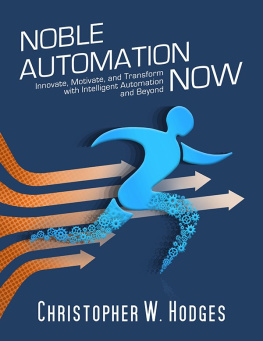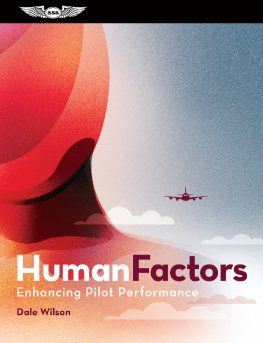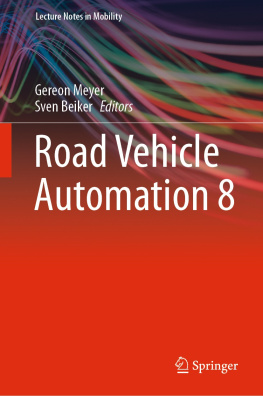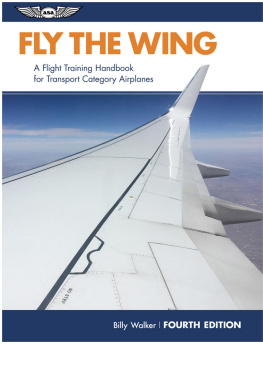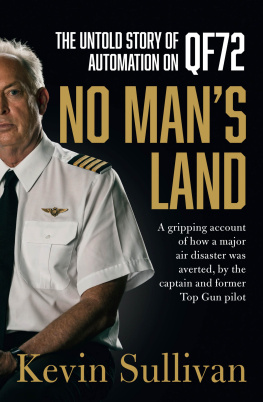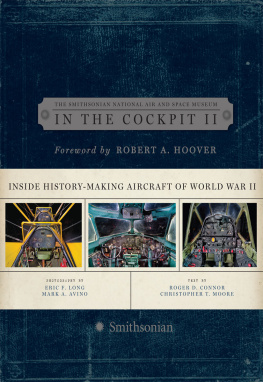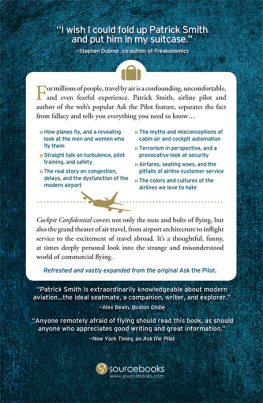Coping with Computers in the Cockpit
Edited by
SIDNEY DEKKER AND ERIK HOLLNAGEL
Linkping University, Sweden
First published 1999 by Ashgate Publishing
Reissued 2018 by Routledge
2 Park Square, Milton Park, Abingdon, Oxon OXl 4 4RN
711 Third Avenue, New York, NY 10017, USA
Routledge is an imprint of the Taylor & Francis Group, an informa business
Copyright Sidney Dekker and Erik Hollnagel 1999
All rights reserved. No part of this book may be reprinted or reproduced or utilised in any form or by any electronic, mechanical, or other means, now known or hereafter invented, including photocopying and recording, or in any information storage or retrieval system, without permission in writing from the publishers.
Notice:
Product or corporate names may be trademarks or registered trademarks, and are used only for identification and explanation without intent to infringe.
Publishers Note
The publisher has gone to great lengths to ensure the quality of this reprint but points out that some imperfections in the original copies may be apparent.
Disclaimer
The publisher has made every effort to trace copyright holders and welcomes correspondence from those they have been unable to contact.
A Library of Congress record exists under LC control number: 99065450
ISBN 13: 978-1-138-60851-1 (hbk)
ISBN 13: 978-0-429-46060-9 (ebk)
Linkping University, Sweden
Another book on aviation automation? Well, perhaps this is not a book on aviation automation per se. It is a book, rather, on how the entire aviation industry is coping with automation. Or more precisely, on how it is coping with the human consequences of automation, which it has fielded over the last two decades. The aviation domain, and the cockpit in particular, is frequently seen to be on the forefront of technological and human-machine interface developments. And indeed, in some sense, progress in the cockpit has been enormous. But from another angle, innovations presented as progress have brought along a large number of unanticipated practical problems practical problems that today form the inherited by-products of once-vaunted automation technologies. Practical problems cloaked as progress, in other words.
Not only individual pilots have to learn how to operate automated aircraft. The entire aviation industry is learning how to deal with the profound implications that automation carries for the operation, design, regulation and certification of passenger aircraft. The industry is struggling to find ways to meaningfully educate and train operators for their new and different work in the automated environment. It is reconsidering who to select for these jobs and how. And now that current cockpit designs are firmly in place and its problems better-accounted for, it is regrouping to begin to regulate and certify cockpit equipment on the basis human factors criteria. This while manufacturers are voicing continued concern over the lack of concrete and specific ideas for better feedback design in the next generation of flightdeck automation.
One result of being ahead of the pack is that an industry encounters and, hopefully, solves a host of new problems and thereby generates an experience that can be helpful to others. It is therefore quite ironic that many other industries are in fact (re)-discovering similar automation related problems for themselves as they stumble ahead on technology-driven paths. For example, ship bridges are seeing more and more moded automation technology become responsible for navigation and many other on-board tasks. Standardised design of interfaces or system logic does not appear to exist and formal operator training is neither required nor well-organised. The result is that ships have begun to show the same pattern of human-machine breakdowns and automation surprises that were discovered in aviation years ago (see for example the grounding of the Royal Majesty, NTSB, 1996). Hence the need for this book: not only is it relevant to exchange experiences and swap lessons across one industry aviation it is also critical to show how one industry has to cope with the consequences of its own automation to industries that are poised to adopt similar systems in their operational environments.
To some extent research efforts and operational experience are beginning to pay off. In itself, this book is an outflow of the increasing realisation that automation is a mixed blessing. It reflects operational, educational and regulatory countermeasures that were for example inspired by the 1996 U.S. Federal Aviation Administration report on human-automation interfaces onboard modem airliners (FAA, 1996). Closer to the ground, many organisations that deal with complex automation acknowledge that changes in technology can be a double-edged sword. One defence procurement agency for example, says that they must strike a balance between simpler equipment and highly automated equipment. The reason they cite is that the former imposes greater manpower burdens but the latter can create excessive demands on operator skills and training. Such lessons learned indicate that old myths about automation (for instance that it reduces investments in human expertise) are becoming unstuck.
Nevertheless, almost all sectors of the aviation industry are still struggling in one way or another to adapt to the emerging realities of automation technology to which this entire book is testimony. The training of pilots from the ab initio (zero-hour) level upward, for instance, has come to the fore as a key issue relative to automated flight decks (Nash, 1998; Lehman, 1998). Does requisite time in single piston aircraft of light wing loading have anything to do with becoming a jet transport pilot in a world of near sonic, satellite-guided computer-managed flight at 35,000 feet? These questions emerge during a time when European operators and regulators are attempting to harmonise training and licensing standards across the continent and while North-American operators are gradually losing a major source of pilots (the military), with collegiate aviation programs working to fill the gap (NRC, 1997). Questions about preparing pilots for their new supervisory roles do not stop at the ab initio level. The debate about optimal training strategies pervades the airline induction (multi-crew, operational procedures) and type rating stages as well. A new pilots first encounter with automation is often delayed to late in his or her training. This means it may fall together with the introduction to multi-crew and jet-transport flying, creating excessive learning demands. Telling pilots later on to be careful and not to fall into certain automation traps (a common ingredient in classroom teaching as well as computer-based training CBT) does little to prevent them from falling into the traps anyway. The end result is that much of the real and exploratory learning about automation is pushed into line-flying.
Automation also erodes the traditional distinction between technical and non-technical skills. This tradition assumes that interactions with the machine can be separated from crew co-ordination. But in fact almost every automated mishap indicates that the two are fundamentally interrelated. Breakdowns occur at the intersection between crew co-ordination and automation operation. Crew resource management training is often thought to be one answer and is by now mandatory. It is also regulated to include some attention to automation. But all too often CRM is left as a non-technical afterthought on top of a parcel of technical skills that pilots are already supposed to have. Air carriers are coming to realise that such crew resource management training will never attain relevance or operational leverage.


